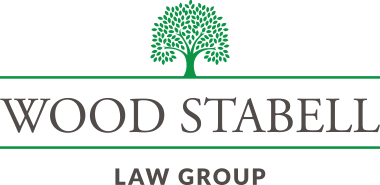In my last article, we talked about the necessary evil of maintaining your business records, particularly in the categories of business filings, piercing the corporate veil, financials and real property. Part two of this series will discuss three more critical areas: IP protections, client and key vendor material agreements and succession planning and exit strategy.
IP protections
Intellectual property law is designed to protect creations of the mind, such as authorship or literary works. However, this also extends into business branding, so you must regularly ensure you comply to protect your IP, as well as to make sure you do not inadvertently infringe on someone else’s IP.
Before anything else, obtaining all the necessary licenses and trademark registrations for the company’s products and services is essential. Ensuring you have a registered trademark gives additional protection, including exclusive rights to operate, and diminishes the burden of proof. With the trademark comes the symbol. As a business owner, ask yourself, “Is the “TM” or “SM” notice displayed in all company literature?”
When protecting your IP, it is also recommended to have your employees, contractors and consultants sign the appropriate Confidential and Invention Assignment Agreements. If they have not, this is something to implement ASAP.
Although your focus may be on protecting your IP, remember to verify that your company is not infringing on the IP rights of others. This is not always top of mind when trying to run a business, but taking the necessary steps to avoid any violation is crucial. As a business owner, if you feel any uncertainty, it’s wise to consult a lawyer so you do not leave anything to chance.
Other material agreements (key client or vendor)
Your business contracts are designed to protect your company, but only if you know what is in them! Within your business, many agreements will come across your desk. One example could be software agreements. Knowing the terms and conditions of each agreement can ultimately save your business money in the end.
If you want to terminate your current software contract but it automatically renews after a certain period of time, knowing the exact date is crucial to staying on top of when to submit the termination of that agreement. I recommend you look at each agreement your company has and run through the checklist below:
• Determine how critical the vendor or client is to the company.
• Determine the payment terms and whether bills are paid in conformity.
• Determine what constitutes default with a client or vendor, as well as termination rights and the notice required.
• Ensure there are soft escalation provisions for situations that company executives could handle or mediate before turning to arbitration or litigation.
• Ensure that contracts are assignable in the event of a sale.
• Ensure the company has control provisions in place to access critical needs.
Succession and exit strategy planning
Every business owner will face an inevitable exit at some point, whether you are growing to sell within five years or plan on working at your business well into your eighties before passing it off to a longtime employee. The smoothest and most successful exits are designed well before you actually need to exit, allowing you time to determine precisely what you need out of the transaction before emotions run high.
To prepare for the inevitable exit, here are key items to keep in mind:
• Prepare a shareholder or buy-sell agreement that includes a fair method of valuation. This may be in your operating agreement.
• Prepare a method of funding the buyout, such as an insurance policy.
• Prepare for a smooth ownership transition with an estate plan (will, DPOA, etc.) or a reasonable liquidation method that permits business continuity.
• Prepare documentation for your company that permits someone the principal owner(s) trust to take over in case of a death or disability.
• Prepare a succession plan and communicate it to all appropriate stakeholders.
• Ensure the stakeholders have personally guaranteed your business loans.
A lot of times, business owners do not want to think about the inevitable day that they leave their business. Whether you are looking to start slowing down or if the worst were to happen, leaving your family, key stakeholders and employees with a plan is essential and the best gift you can give them.
This can include the optimum time window and having key employee contracts set. For example, a medical practice business owner waited late in life to begin his exit plan. They found a buyer quickly, but unfortunately, the sale could not go through because key employees’ contracts were not in place and would not be signed. The deal fell through and the owner was stuck working in his later years.
Conclusion
Congratulations! If you have followed all of the steps in this article and part one, you are well on your way to an organized and efficient system for your business records. You can be confident that your business is protected at various levels.
The information provided in this article is for informational purposes only and does not constitute legal advice. No attorney-client relationship is formed by virtue of this article. For specific legal advice related to your situation, please consult with a qualified attorney.



